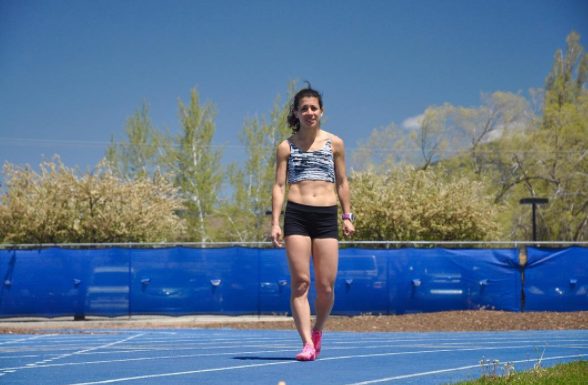How I achieved qualifying standard for the World Championships by three tenths of a second
For many athletes, Payton Jordan kicks off the outdoor reason. One Canadian elite explains where her season goes from here

Payton Jordan marks the beginning of the outdoor season for many track athletes. Characterized by fast middle and distance races, coupled with the nice weather, the meet draws athletes from around the world. They flock to Palo Alto to chase championship time standards and personal bests. I’ve raced there five of the past six years and I look forward to returning next year.
After four and a half tough weeks training at altitude, I was feeling pretty confident about my fitness and knew that the time standard of 15:22.00 for the IAAF World Championships was well within my reach. I was excited to see how I would respond to the physiological benefits of altitude training and was hoping this 5,000m would feel a bit easier than usual.
RELATED: Dear graduating student, don’t quit running… not yet
The fastest section of women’s 5,000m was shaping up to be a stacked race with several Olympic finalists, global medalists and fellow Canadians Jess O’Connell, Kate Van Buskirk and Nicole Sifuentes. My main goal was to run the standard for Worlds, but going for a personal best is always part of the plan too.
Warming up, I was surprised with how effortless running felt and how smooth my strides were. Already, I had a good feeling. But, unfortunately the night of the race was uncharacteristically cold and windy. On race day, I tried to control the controllable, and the weather was something everyone just had to deal with. Despite my hopeful feeling preceding the race, conditions led to a much slower pace than my coach and I had anticipated. Though I was aware that we were running way off World Standard, I was confident that the pace would pick up after 3,000m.
RELATED: How to warm up like an Olympian
And it did. We ramped up the pace in the last mile until we were in a flat out sprint with 400m to go. I closed as hard as I could and just slid under the World Championship standard by three tenths of a second to run 15:21.64. Success!
I felt an immense amount of relief as the times came up on the scoreboard. I spent a good amount of my season last year chasing the Olympic standard and to not be chasing this year frees me to take risks and race as necessary. This wasn’t as fast as I had hoped, but I gained more experience running in a crowd with unpredictable pace changes and closing fast, which mimic the typical pattern of a championship style race. Most of what I’ll do this year now will be trying to prepare to be successful in the first round (the heats) at Worlds in hopes of qualifying for the final.
To watch the last lap of the race, check out Flotrack’s Kick of the Week here.
Next up, I’ll be racing at the USATF HP Middle Distance Classic on May 18th alongside a slew of other Canadians and testing my speed over 1,500m.


